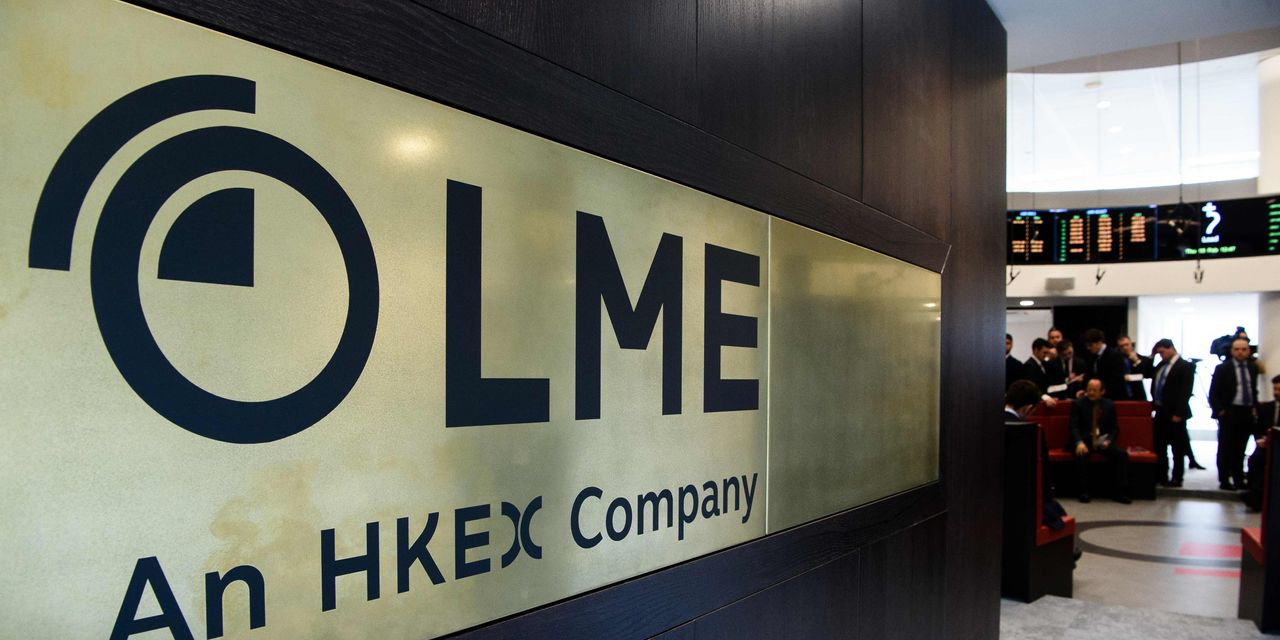Speculation that the U.S. is considering a ban on aluminum from Russia contributed to a brief spike in prices for the metal a week ago, but some consumers have already voluntarily chosen to avoid metals from the country.
That’s led the London Metal Exchange (LME) to consider options to circumvent trading distortions potentially caused by a buildup of metals from Russia in its warehouses.
News reports last week said the U.S. was looking into a possible ban, restrictions, an increase in tariffs on aluminum imports from Russia, or sanctioning Russia’s aluminum producer United Co Rusal, in response to the country’s military escalation of its war in Ukraine.
“There’s definitely chatter in the aluminum market, but a lack of clarity only contributes to uncertainty that keeps some buyers on the sidelines,” said Christopher Davis, price reporting director, Americas, at S&P Global Commodity Insights. “Some speculate there could be tariffs implemented,” he said. That would be “less drastic than sanctions or a full ban, which would have a more significant impact.”
In early March, aluminum producer Alcoa Corp.
AA,
said it would stop buying raw materials from, and selling its products to, Russian businesses in response to the country’s invasion of Ukraine. Some reports last week said Alcoa asked the White House to halt U.S. imports of aluminum from Russia.
The LME released a discussion paper on Russia metal on Oct. 6 and said it’s been “closely monitoring the usage and throughflow of Russian metal on the LME, to ensure that LME warehouses do not see a significant inflow of unwanted Russian stocks, posing a risk of creating a disorderly or unfair market.”
It listed three options to help deal with growing concerns over the “threat to market orderliness.”
“If the underlying physical aluminum market got to the point where the vast majority was not accepting Russian metal, then those tons wouldn’t be representative of the market at large,” said S&P Global’s Davis, so there’s a “market view that the LME would be more likely to delist it.”
On Wednesday, the LME aluminum cash bid price was at $2,168 per metric ton, down from $2,373.50 on Oct. 13, the day after reports of a potential U.S. ban on the metal from Russia.
For now, there appears to be sufficient uptake and Russian metal remains viable, Davis said. Next year, however, there could be more consumers who’ve decided not to take on additional Russian material and the LME might decide to take formal action, he said.
The LME listed its first option to deal with growing concerns as maintaining the current position, with no further action until international governments impose sanctions on Russian metals, or stocks and pricing data show an impact from warranted Russian metal on pricing. Warrants represent entitlement to a specific lot of LME-approved metal.
The LME said it could also introduce thresholds for warranted Russia metal. If, for example, Russian metals constitute a specified percent of stock on warrant for a metal, the LME would suspend further deliveries. The final option would be suspension of the warranting of Russian metal in LME warehouses globally, which could lead to short-term market disruptions, but provide certainty for the market, LME said.
“Given that Russia accounts for about 5% of global aluminum output, the metals would be one of the most affected if we were to see a ban or limits on Russian deliveries into LME warehouses,” Ewa Manthey, ING commodities strategist, wrote in recent commentary. Russian aluminum has accounted for as much as three-quarters of LME stockpiles over the past decade, she said. “Clearly, the LME is worried about the risk of Russian metal being dumped into LME warehouses as buyers become less willing to accept Russian metals for next year’s supplies.”
““ Clearly, the LME is worried about the risk of Russian metal being dumped into LME warehouses as buyers become less willing to accept Russian metals for next year’s supplies.” ”
Manthey believes a full ban on Russia metals would be the most bullish outcome of the LME discussion paper — “effectively cutting Russian metals off from the exchange.”
LME warehouses have also been “filling up fast” with Russian copper since the conflict broke out in late February, said Ronnie Cecil, principal analyst, metals and mining at S&P Global Commodity Insights. Any potential ban by the LME, or the U.S. government on imports from Russia is likely to “increase the upward pressure on prices.”
Cecil’s colleague at S&P Global, Senior Analyst of metals and mining research Jason Sappor said LME nickel prices have found support this month as the exchange considers banning new Russian nickel from being delivered into its warehouses.
Consumers’ “self-sanctioning” of nickel produced by Russia’s Norilsk Nickel for 2023 annual contracts, during the current so-called “mating season” negotiation period which runs between September and year-end, “could push the company to deliver excess metal into LME warehouses and put downward press on LME nickel prices,” Sappor said. Self-sanctioning refers to buyers voluntarily avoiding Russian metals given the uncertainties surrounding them.
Even so, Russia is likely to find a willing buyer in China, particularly for aluminum.
“The question is whether a ban or sanctions on Russian aluminum would produce the Biden administration’s desired effects,” said Jeff Klearman, portfolio manager at GraniteShares, which offers the GraniteShares Bloomberg Commodity Broad Strategy No K-1
COMB,
an exchange-traded fund that provides broad exposure to commodities.
For example, Russia may “avoid repercussions of a U.S. ban by selling aluminum to China, at a discounted price, and then China selling its aluminum production to the U.S. at a higher price,” he said.
Russia is a major aluminum producer and measures taken that effectively remove Russian aluminum from the market will likely increase aluminum prices and thus contribute to higher levels of inflation, said Klearman.
Given that, the Biden administration may be reluctant to implement a ban, “especially going into midterm elections,” he said.
